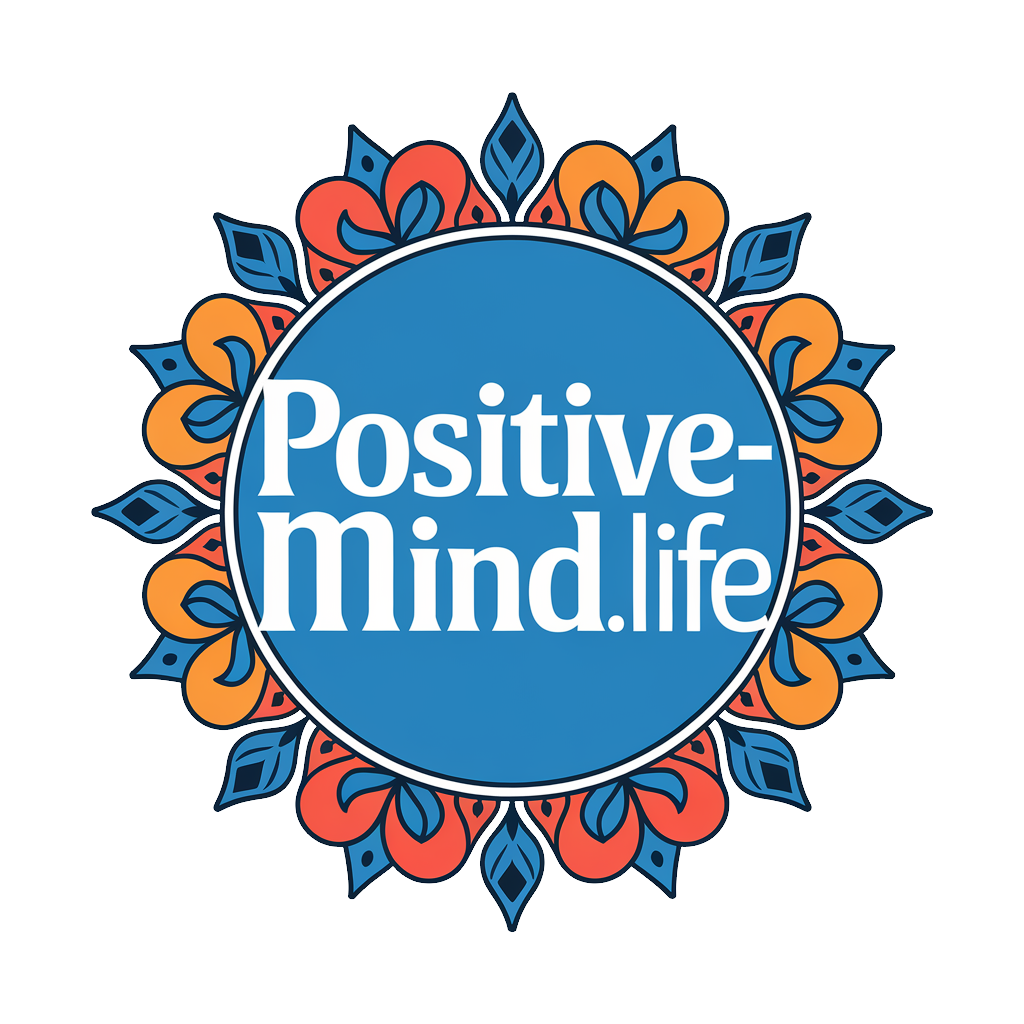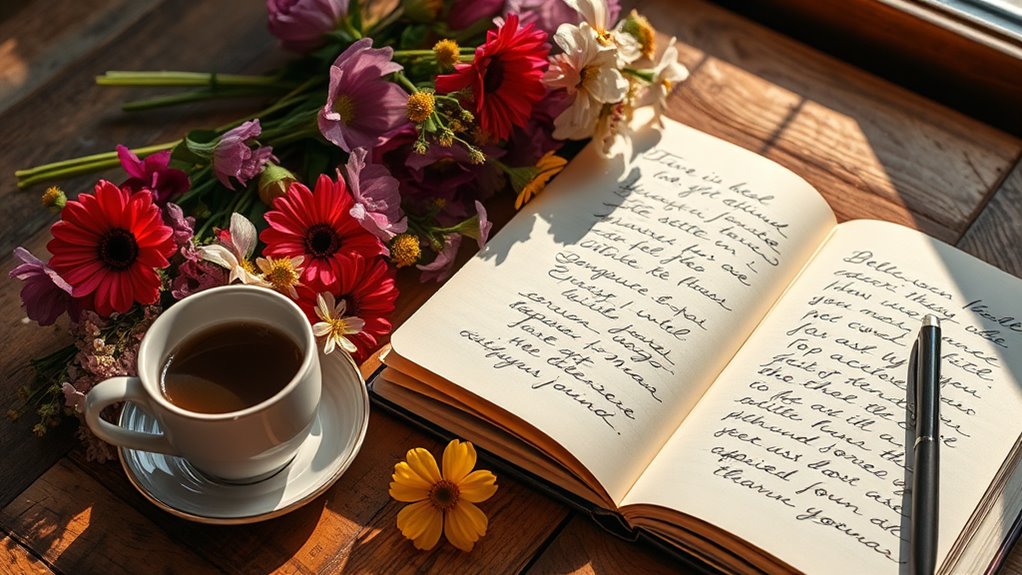Transform Your Life With These Gratitude Journaling Hacks!
Gratitude journaling has the power to transform your life by shifting your focus from negativity to positivity. It enhances your mood, reduces stress, and strengthens your resilience. To get started, carve out just a few minutes daily and choose a journal style that speaks to you. Use prompts like “What made me smile today?” to spark your reflections. Be creative—incorporate drawings or photos to keep it vibrant. Remember, it’s okay to start small; celebrate each entry as a win. By embracing these hacks, you’ll unlock deeper emotional growth and fulfillment. There’s much more to explore on this journey!
Key Takeaways
- Dedicate a few minutes daily to reflect on positive experiences, enhancing mood and emotional well-being.
- Utilize creative journaling techniques like doodles or collages to make the practice more engaging and personal.
- Set realistic goals, starting with just a few entries per week to build consistency and reduce overwhelm.
- Incorporate daily prompts to inspire deeper reflections and overcome writer’s block, making gratitude journaling more impactful.
- Change your journaling environment occasionally to spark inspiration and boost creativity in your reflections.
Benefits of Gratitude Journaling
Embracing gratitude journaling can truly transform your perspective on life. When you take the time to reflect on what you’re thankful for, you actively shift your focus away from negativity and stress. This simple practice nurtures your mental health, allowing you to cultivate a positive mindset that empowers you to tackle daily challenges with resilience.
You’ll discover that documenting your gratitude not only enhances your mood but also strengthens your overall emotional well-being. As you consistently write down the things you appreciate, you’re training your brain to prioritize positivity, making it easier to navigate tough times. This shift in perspective can lead to reduced anxiety and a greater sense of fulfillment in your life.
Moreover, gratitude journaling encourages mindfulness, grounding you in the present moment. By acknowledging the good in your life, you become more aware of your surroundings and the connections you have with others. This deeper awareness fosters a sense of community, improving your relationships and social interactions.
Incorporating gratitude journaling into your routine is more than just a habit; it’s a powerful tool that can enhance your mental health and cultivate a lasting positive mindset. Start embracing it today!
Getting Started With Journaling
Kickstart your gratitude journaling journey by setting aside just a few minutes each day to reflect on what matters most to you. Choosing the right journal types can enhance your experience. Whether you prefer a classic notebook, a digital app, or guided journals, find one that resonates with you.
Start with simple writing tips to ease into the practice. Focus on specific moments or people that brought you joy, rather than broad concepts. This specificity deepens your gratitude and makes your entries more impactful. Consistency is key, so pick a time that suits your routine—morning reflections can set a positive tone for your day, while evening entries allow for a moment of peace.
Don’t worry about perfection; there’s no right or wrong way to journal. Allow your thoughts to flow freely, and remember that this is a personal journey. Set realistic goals, like aiming for three entries a week, and gradually increase as you feel more comfortable. Embrace this practice as a powerful tool for transformation, and watch how it shifts your perspective over time. You’ve got this!
Daily Prompts to Inspire Gratitude
As you settle into your gratitude journaling routine, daily prompts can provide a spark to ignite your reflections. Each day, consider starting with a simple question or statement that encourages you to dig deeper into your feelings. For instance, ask yourself, “What made me smile today?” or “Who am I grateful for and why?” These prompts can help you create meaningful gratitude lists that go beyond surface-level appreciation.
Another effective prompt is to reflect on a challenge you faced and identify the lessons learned. This not only cultivates resilience but also nurtures thankful reflections about personal growth. You might also try focusing on specific aspects of your life, such as your relationships, health, or career. By narrowing your focus, you can uncover unique blessings that often go unnoticed.
Finally, don’t hesitate to mix it up! Write about something you appreciate about yourself or something you often take for granted. Embrace these prompts as tools to deepen your gratitude practice, inspiring you to discover new layers of appreciation each day. With consistent use, you’ll master the art of gratitude journaling and transform your daily mindset.
Creative Journaling Techniques
Creative journaling techniques can elevate your gratitude practice, making it an engaging and enriching experience. To truly master this art, consider incorporating elements of artistic expression into your entries. Instead of just writing words, let your emotions flow through drawings, doodles, or even collages that reflect your feelings of gratitude. This not only enhances your connection to your entries but also allows you to express yourself in unique ways.
Visual storytelling can transform your journal into a vibrant tapestry of moments you cherish. Capture significant experiences with photographs, sketches, or magazine cutouts that represent your gratitude. Each visual element you add tells a story, creating a deeper emotional resonance with your practice.
Experiment with different formats, like mind maps or bullet journaling, to organize your thoughts creatively. This approach not only keeps your practice fresh but also challenges you to think differently about what you’re grateful for. Remember, there’s no right or wrong way to journal; it’s about what resonates with you. By embracing these creative techniques, you’ll cultivate a gratitude practice that’s not just routine, but a source of joy and inspiration.
Overcoming Challenges in Journaling
Journaling can feel overwhelming at times, especially when life’s demands seem to overshadow your desire to reflect and express gratitude. You might encounter writer’s block or emotional resistance, making it tough to get started. But don’t worry; overcoming these challenges is possible. Here are three strategies to help you push through:
-
Set Small Goals: Start with just a few sentences. Instead of aiming for a whole page, focus on writing one or two things you’re grateful for. This can ease the pressure and help you regain your flow.
-
Change Your Environment: Sometimes, a shift in scenery can spark inspiration. Try journaling in a park, café, or even a cozy corner of your home. A new setting can break the monotony and help you reconnect with your thoughts.
-
Use Prompts: If you’re struggling to find words, prompts can guide you. Consider questions like, “What made me smile today?” or “Who am I grateful for this week?” These can kickstart your writing and minimize emotional resistance.
Embrace these strategies, and you’ll find your journaling experience more fulfilling!
Maintaining Consistency and Motivation
Finding a routine that keeps you engaged in gratitude journaling can be challenging yet rewarding. To maintain consistency and motivation, consider implementing habit tracking. By visually marking your progress, you’ll reinforce a sense of accomplishment, making it easier to stick with your journaling practice.
Time blocking is another effective strategy. Set aside dedicated moments in your daily schedule for journaling, treating it as a non-negotiable appointment. When you prioritize this time, you’re more likely to follow through.
Don’t underestimate the power of accountability partners. Share your journaling goals with a friend or join a community. This support system can motivate you to stay committed and celebrate your wins together.
Lastly, integrate reward systems into your routine. Treat yourself when you hit milestones—perhaps a special coffee or a new journal. These rewards create positive associations with your journaling habit, making it more enjoyable.
Frequently Asked Questions
Can Gratitude Journaling Help With Anxiety and Depression?
Gratitude journaling can significantly aid in anxiety relief and depression management. By focusing on positive experiences, you shift your mindset, fostering resilience and promoting emotional well-being. It’s a powerful tool for mastering your mental health journey.
How Long Should I Spend Journaling Each Day?
Sure, you could spend hours journaling, but who’s got that kind of time? Aim for 10-15 minutes daily. Use these journaling tips to enhance your time management, making the most of your reflections and growth.
Is There a Specific Time of Day to Journal?
There isn’t a perfect time to journal, but morning benefits like setting intentions can energize your day. Evening reflections help you process and unwind. Experiment to find what feels right for you and your journey.
What if I Struggle to Find Things to Be Grateful For?
If you struggle to find gratitude, try using gratitude prompts to spark inspiration. Shifting your mindset can help you recognize even the smallest blessings, turning your perspective around and revealing the abundance around you.
Can I Use Digital Tools for Gratitude Journaling?
Absolutely, you can use digital tools for gratitude journaling! Apps like Day One and Journey offer user-friendly interfaces, helping you capture your thoughts effortlessly. Embrace digital journaling to enhance your practice and make gratitude a daily habit.





